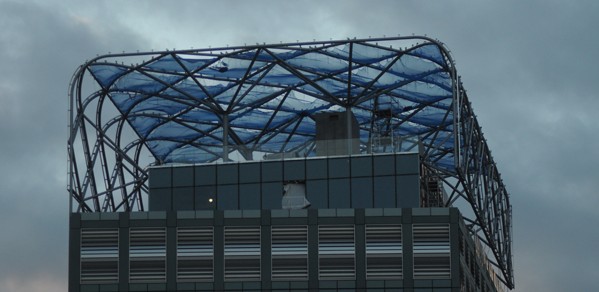
Structural monitoring of infrastructure is crucial but can be valueless unless it is carefully designed and deployed. Dr Phil Catton explores the importance of understanding the value of information to directly support informed decisions.
Working with the contractors, CSIC installed fibre optic strain sensors down cores in the existing piles to measure their response to the change in load during demolition of the old building.
Dr Phil Catton, CSIC
Imagine the scenario. You’re procuring a new bridge and, as an intelligent client, you employ a team of leading consultants and contractors to design and build it. You also invite the Department of Engineering’s Centre for Smart Infrastructure and Construction (CSIC) to advise on structural monitoring options.
When faced with a blank piece of paper and the task of designing a new monitoring regime, what should be the objectives? In practice, this process tends to involve anticipating what might go wrong and over what time scale, and hence what sensors might give forewarning of failure or deterioration.
But are these the right questions? In 2011, just prior to the construction of a new bridge in London, these questions were initially posed. However, it was quickly recognised that any deterioration, if it could be measured, may take decades to surface by which time any sensors are likely to be obsolete. Should data be collected and interpreted for decades on the off-chance that a problem might arise, and who would gain benefit from, and be prepared to pay for, this monitoring?
It was decided that no stakeholder would gain sufficient value from a structural health monitoring system to warrant installing such a system. This experience encouraged CSIC to develop a new framework for the design of monitoring systems to assist stakeholders in understanding the value of information that can be obtained. For example, the bridge could have been monitored to validate design assumptions, providing valuable feedback to the designers and the contractors as well as those responsible for maintenance in the future.
This framework is now being applied to other projects, including the new Bury Court Building on Bevis Marks, in London’s East End. This 16-storey office block is on a site previously occupied by an 8-storey building supported by old piles from the 1980s. The existing piles might not support a building twice as high as before, but could they complement additional piles and bear some of the load? The contractor’s options were to excavate and dispose of the existing piles or load-test them to verify their integrity and capacity, and then re-use them as part of the new foundations. The latter option promised huge savings in time, materials and carbon, so the project team needed to prove how much load the existing piles could carry.
Working with the contractors, CSIC installed fibre optic strain sensors down cores in the existing piles to measure their response to the change in load during demolition of the old building. In this innovative technique, laser light is shone through the fibre optic cables to measure the strain along the entire length of the pile. The results enabled new foundations to be designed which re-used the existing piles. This project won the 2013 Ground Engineering Sustainability Award for the contractor, saving an estimated £6 million, six months of construction time and 1000 tonnes of carbon. Sensing is valueless, but when carefully designed and deployed where it directly supports big decisions, it can be priceless.
This article was originally written for Infrastructure Intelligence's magazine by Dr Phil Catton, a researcher at the Centre for Smart Infrastructure and Construction.

